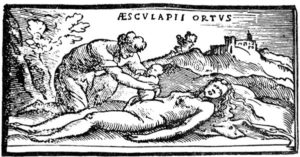Caesarean section is the surgical delivery of a baby through an incision in the mother’s abdomen and the uterus. In modern obstetric practise about 10 to 20 % of babies are delivered by cesarean section. In fact, there were several factors that contributed to the rapid rise in cesarean sections. Some of the factors were technological, some cultural, some professional, others legal. Difficult vaginal delivery ends up with women with severe urinary incontinence, diminished sex lives, inhibited physical activities and the resultant severe loss of quality of life.
Women experience complications during labour and delivery that are due to conditions existing prior to pregnancy or those that develop during pregnancy like eclampsia and placenta praevia. These problems can be life-threatening for both mother and baby, and in approximately forty percent of such cases, cesarean section provides the safest solution.
Significant medical advances were made in the fields of microbiology, which led to increasingly effective antiseptic technique, surgical technique and anaesthetics. As the figures for maternal mortality after cesarean section reduced to nearly zero the procedure became more accepted and established.
While the operation historically has been performed largely to protect the health of the mother, more recently the health of the fetus has played a larger role in deciding to operate. History suggests that the indications for the cesarean section have varied tremendously. They have been shaped by religious, cultural, economic, professional, and technological developments — all of which have impinged on medical practice. The operation originated from attempts to save the soul, if not the life, of a fetus whose mother was dead or dying.
History of caesarean surgery:

Let us know the origin of the practice of delivering children Trans abdominally, referred to as “per viam non naturalem” (by non-natural route).
According to Greek mythology, Apollo removed Asclepius, founder of the famous cult of religious medicine, from his mother’s abdomen. Numerous references to cesarean section appear in ancient Hindu, Egyptian, Grecian, Roman, and other European folklore.
The early history of the cesarean section remains shrouded in myth and is of dubious accuracy. Even the origin of “cesarean” has apparently been distorted over time. It is commonly believed to be derived from the surgical birth of Julius Caesar; however, this seems unlikely since his mother Aurelia is reputed to have lived to hear of her son’s invasion of Britain. At that time the procedure was performed only when the mother was dead or dying, as an attempt to save the child for a state wishing to increase its population.
The origin of the word cesarean is thought to have originated from Julius Caesar, who was the first live infant born by this method (in 100 B.C.) by Aurelia (mother). Much of the fear about this surgical practice was due to the lack of effective and safe anaesthesia techniques and overwhelming surgical infections.
Numa Pompilius (715-673 B.C.), the second king of Rome enacted a law which stated that it was forbidden to bury a dead pregnant woman before the fetus has been removed.The earliest account of this procedure in any medical textbook of importance appeared about the year 1350, where it is noted to be a proper procedure after the death of the mother.
The word caesarian refers to many meanings. It was the Jesuit, Théophile Raynaud, who was the first to write on the “caesarean” operation. François Rousset called the operation a “hysterotomotokie”.
Jacob Nufer of Siegertshaufen did this around 1500 AD on his own wife, and used a razor blade. Apparently she had been in labour for many days, and over a dozen midwives and barbers had failed to deliver the baby. Even though his wife was in favour of the attempt, since she believed that she was dying anyway, the authorities turned deaf ears to his petitions. Nufer, in desperation, proceeded anyway. After laying her on a table with the necessary attendants to hold her down, Nufer made the incision, extracted the child and apparently sutured the abdominal wall. Almost miraculously his wife recovered, but just as remarkably went on to bear twins at a later date and four more children, all of whom were delivered normally.
The operation was always done as a last resort on a living mother. As a result of the extremely high maternal mortality, there was even an active anti-cesarean movement, called “Ecole anti-Cesarienne” in France. At the time, of course, this new type of medical education was still only available to men. In Western society, women, for the most part, were barred from carrying out caesarean sections until the late nineteenth century, because they were largely denied admission to medical schools. The first recorded successful caesarean in the British Empire, however, was conducted by James Miranda Stuart Barry (performed the operation while masquerading as a man!!)
A new era in surgical practice began in 1846 at Massachusetts General Hospital when dentist William T.G. Morton used diethyl ether while removing a facial tumour. In obstetrical surgery, this new approach helped in reducing maternal and perinatal infant mortality rates.
Accompanying these trends was a tendency over the past half-century for the status of the fetus increasingly to be given centre stage. Since 1940, the trend toward medically managed pregnancy and childbirth has steadily accelerated. Advances in anaesthesia contributed to improving the safety and the experience of the caesarean section.
Ultrasound made it possible to measure fetal growth and fetal skull width in relation to the mother’s pelvic dimensions and now has become a routine diagnostic device. And it provides valuable information regarding the need for elective caesarian section. As a result of the ability to detect signs of fetal distress, many caesarean sections are swiftly undertaken to prevent such serious problems as brain damage due to oxygen deficiency.
Caesarean section historically focused on saving foetuses has been one of the significant advances in obstetric surgery which have reduced morbidity and mortality of both mother and the fetus.
